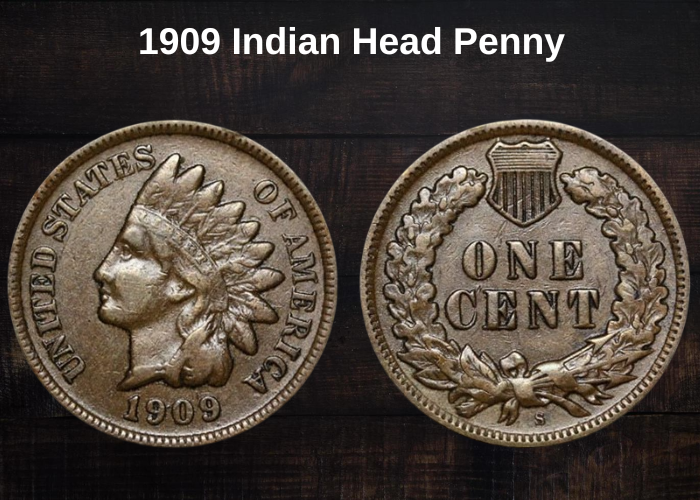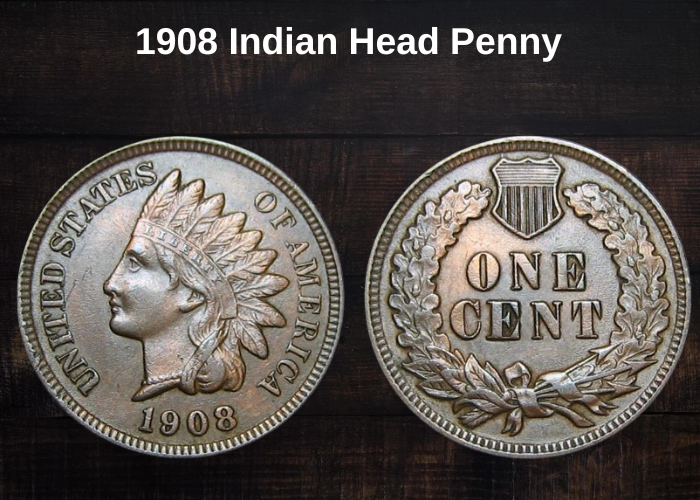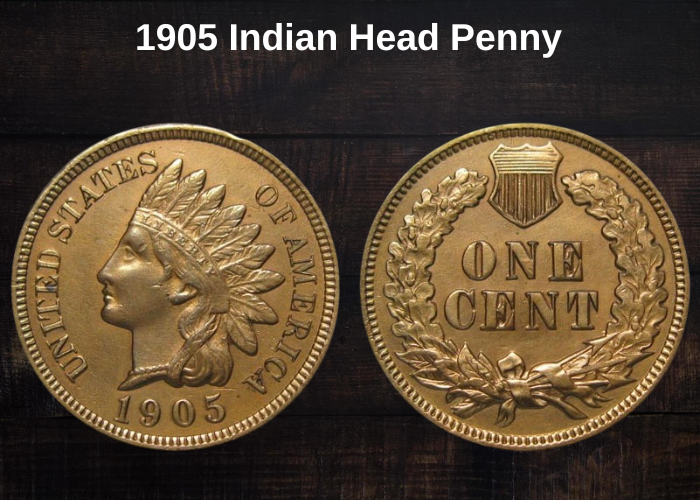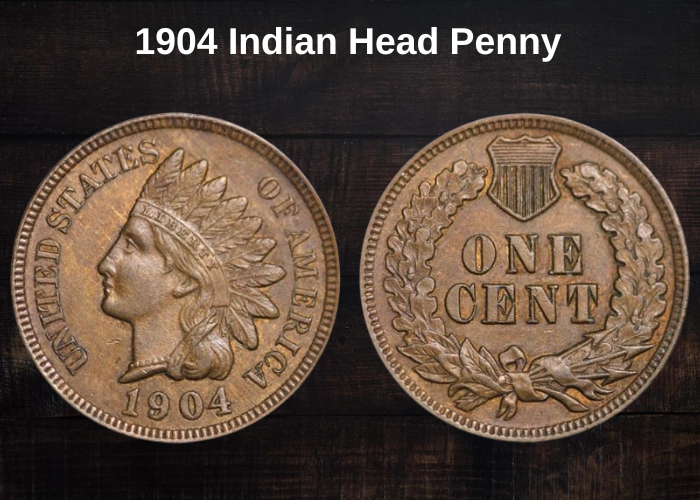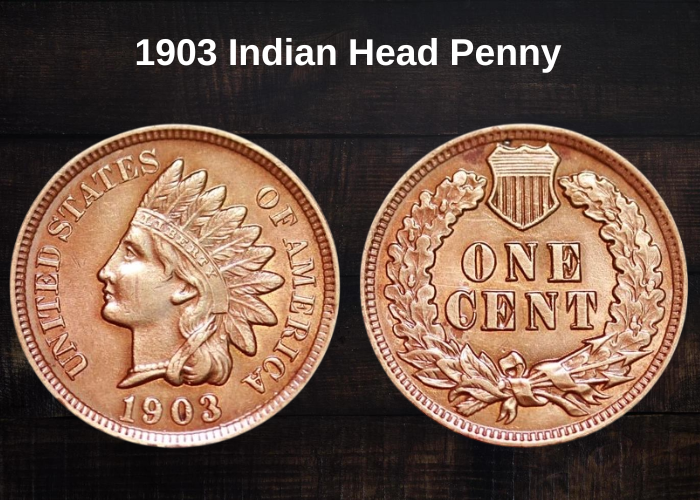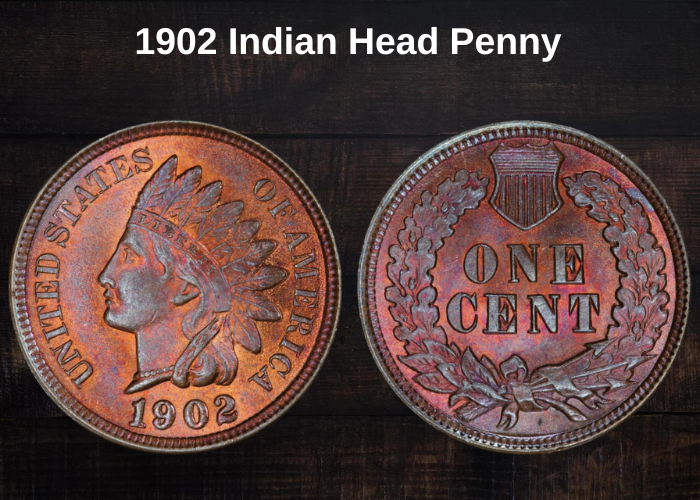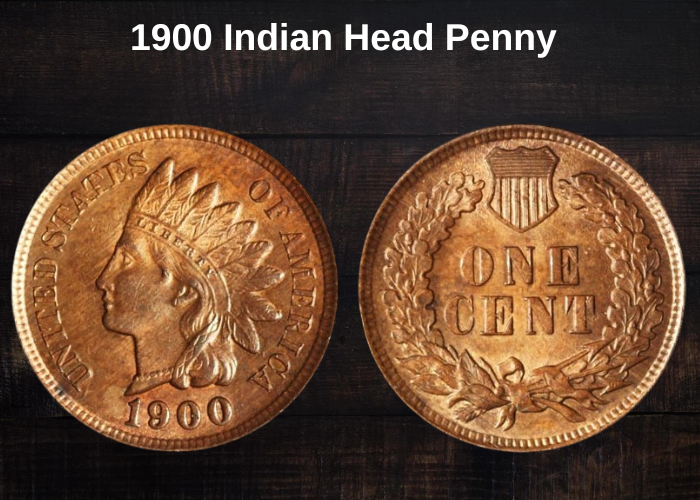The 1906 Indian Head penny is a valuable collectible, and its worth can vary significantly depending on its condition and whether it has a proof or regular mint mark. Here’s a general breakdown of its value:
1906 Indian Head Penny Value Chart
| Mint Mark | Good | Fine | Extremely Fine | Uncirculated |
|---|---|---|---|---|
| 1906 No-Mint Mark | $2.44 | $6.11 | $12 | $48 |
| 1906 Proof Indian Head Penny | – | – | – | $4,400 |
The History of the 1906 Indian Head Penny
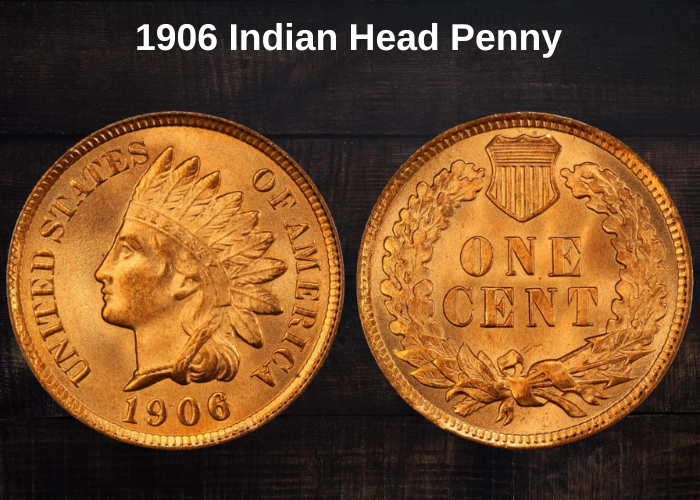
The Indian Head penny, designed by Chief Mint Engraver James Barton Longacre, is the predecessor to the popular Lincoln cent. Also known as the Indian Head cent, its history dates back to 1858 when the United States Mint began producing it.
Historical Background
Before 1858, the one-cent coin was made of 90% silver and was a large coin about the size of a half dollar. However, with the discovery of large amounts of gold in the Western United States, copper prices shot up drastically, making it expensive for the Mint to produce large copper coins, even though they had once been a major source of profit.
Size and Composition Reduction
To save costs due to high copper prices, the Mint decided to reduce the copper composition in the cent to 88% copper and 12% nickel, and also shrink its size. This change resulted in the Flying Eagle Cent, the country’s first copper-nickel coin.
Design Change
However, by 1858, the Mint quickly discovered that the Flying Eagle design was difficult to mint and began looking for alternatives. Mint Director James Ross chose the Indian Head design for the obverse and a laurel wreath for the reverse, which was replaced by an oak wreath in 1860.
Popularity of the Coin
Since the end of the Civil War, the Indian Head cent was extremely popular, encouraging the Mint to produce and release large numbers of these coins into circulation.
Peak Production and End of the Series
The mintage peaked at 96,022,255 in 1906 and 100 million in 1907, the highest mintages of the series. The Lincoln cent replaced the Indian Head cent in 1909, marking the end of the series.
The Features of the 1906 Indian Head Penny
Now, let’s take a closer look at the distinctive features of the 1906 Indian Head penny. Understanding these details can aid in accurately grading and recognizing valuable 1906 Indian Head pennies.
The Obverse of the 1906 Indian Head Penny
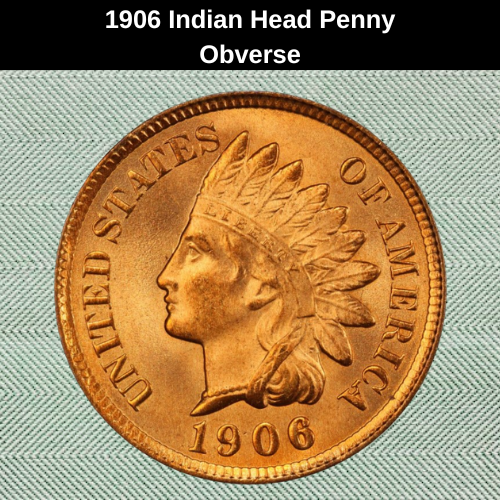
The Indian Head penny is an exquisite coin with impressive designs on both its obverse and reverse. On the obverse, designer James Barton Longacre created a portrait of the allegorical Lady Liberty, adorned with a traditional Indian headdress.
There has been speculation that the woman depicted was Longacre’s daughter, Sarah, but Longacre himself denied these claims. He clarified that the design was inspired by a statue of Crouching Venus in Philadelphia, which was lent by the Vatican.
Along with the striking right-facing portrait, the obverse also includes the inscriptions “UNITED STATES” on the right inner rim and “OF AMERICA” on the left inner rim.
The Reverse of the 1906 Indian Head Penny
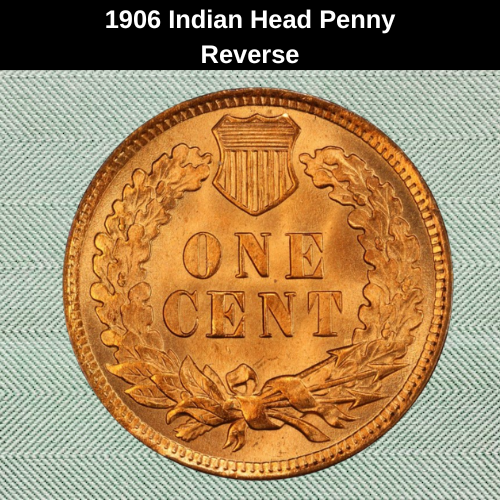
The reverse of the 1906 Indian Head penny features a simple yet elegant design. At the top, a union shield symbolizes peace and unity following the Civil War.
Flanking the shield on either side are two oak wreaths, delicately tied together at the bottom with a ribbon. Emerging through the ribbon knot are a bundle of arrows, representing the nation’s readiness to defend itself and protect its values.
In the center, the coin’s denomination, “ONE CENT,” is prominently displayed, completing the design.
Other Features of the 1906 Indian Head Penny
The 1906 Indian Head penny is a relatively small coin, measuring 19.00 millimeters in diameter and weighing 3.00 grams.
It is composed of 95% copper, with the remaining 5% consisting of tin and zinc, and features a plain edge.
Minted in Philadelphia, the 1906 Indian Head penny was produced in both regular strikes and proof versions. As is customary, neither the regular strikes nor the proof coins feature a mint mark on the obverse or reverse.
1906 Indian Head Penny Grading
Grading Indian Head pennies, including the 1906 variety, focuses on the coin’s eye appeal and condition. Since most circulated examples are worn, higher premiums are typically given to uncirculated pieces.
To determine if a penny is uncirculated, check for an original shiny luster. Under a single light source, the luster should be visible along the rim and across the coin’s surface, both on the obverse and reverse.
Pay attention to the high spots on the coin, such as Liberty’s cheek, chin, jawline, and hair tips on the obverse, where you should see light radiating. On the reverse, look for light reflecting around the edges of the oak wreath, the ONE CENT denomination, and the ribbon knot.
Here is a breakdown of coin grades:
- 1 Basal State-1
- 2 Fair
- 3 Very Fair
- 4, 5, 6 Good
- 7, 8, 10 Very Good
- 12, 15 Fine
- 20, 30 Very Fine
- 40 Extremely Fine
- 50 About Uncirculated
- 60, 65, 70 Mint State
To understand the value of your coin, you can refer to detailed grading guides, which are essential to determining its specific value.
1906 Indian Head Penny Value Guides
The value of a 1906 Indian Head penny depends on factors such as its condition, rarity, and any notable errors. The color of the coin is also important, with brown cents being the least valuable and fully brown coins being the most sought after by collectors.
The 1906 Indian Head penny has a high mintage, meaning that despite its age, the coin is not particularly rare. As a result, 1906 Indian Head pennies are fairly common across all grades.
Certain error varieties in this series are more desirable and can fetch higher prices, with some collectors paying hundreds of dollars for them.
There are two main varieties of the 1906 Indian Head penny:
- 1906 No-Mint Mark Indian Head Penny
- 1906 Proof Indian Head Penny
These two varieties are essential to determine the coin’s exact value, as they can vary greatly depending on condition and other characteristics.
1906 No-Mint Mark Indian Head Penny Value

The 1906 Indian Head penny has a high mintage of approximately 96,020,530 coins struck by the Philadelphia mint, making it fairly common and accessible for collectors, especially beginners.
Here’s an overview of the value based on condition:
- A 1906 Indian Head penny graded as Fine is worth around $4.
- One in About Uncirculated condition could be worth up to $20.
- Brown circulated 1906 Indian Head cents typically range between $2 and $35.
- A brown coin in mint state could fetch as high as $390.
For fully red specimens, the value can rise significantly:
- At grade MS62, a coin might be worth $120.
- A coin graded MS66 can fetch around $2,150, though some collectors have sold gem-quality coins for much higher prices.
1906 Proof Indian Head Penny Value
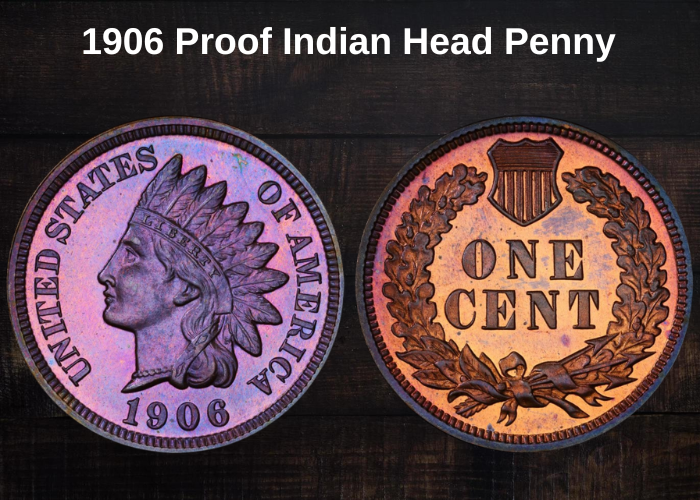
In 1906, the Philadelphia Mint also produced proof coins, which are of much higher quality compared to regular strikes. These proof coins feature detailed designs, frosted surfaces, and a brilliant luster that makes them stand out.
About 1,725 proof coins were struck that year, and they come in various categories including brown, red-brown, red, and cameo—with cameo being the most exceptional, showcasing a gem-quality specimen.
Due to the low mintage, these 1906 proof Indian Head pennies are scarce, with the red and cameo varieties being particularly rare.
Here’s a breakdown of their value:
- Brown proof coins graded PF67 can fetch up to $2,250. For lower grades, you might find:
- PF62 for around $175,
- PF65 for about $625.
The most expensive brown 1906 Indian Head penny ever sold was a PF67 specimen, which went for $4,025 in a 2009 Stack’s auction.
- Red 1906 proof coins graded PF62 are worth around $315, and the value increases as the grade goes up:
- A PF66 can sell for $2,800.
- A rare PF67 red coin fetched a staggering $14,950 in 2009 at a Heritage Auctions sale.
- Cameo proof coins are extremely rare. One graded PF67 sold for $30,550 in a 2017 Stack’s Bowers auction.
These rare proof coins can command impressive prices, especially for high-grade specimens.
Rare I906 Indian Head Penny Errors List
When it comes to collecting 1906 Indian Head pennies, while pristine, uncirculated specimens are highly valued, certain error coins can be worth much more than their regular counterparts. These odd-looking coins can sometimes fetch hundreds or even thousands of dollars, depending on the nature and rarity of the error.
1906 Repunched Date Indian Head Penny Error
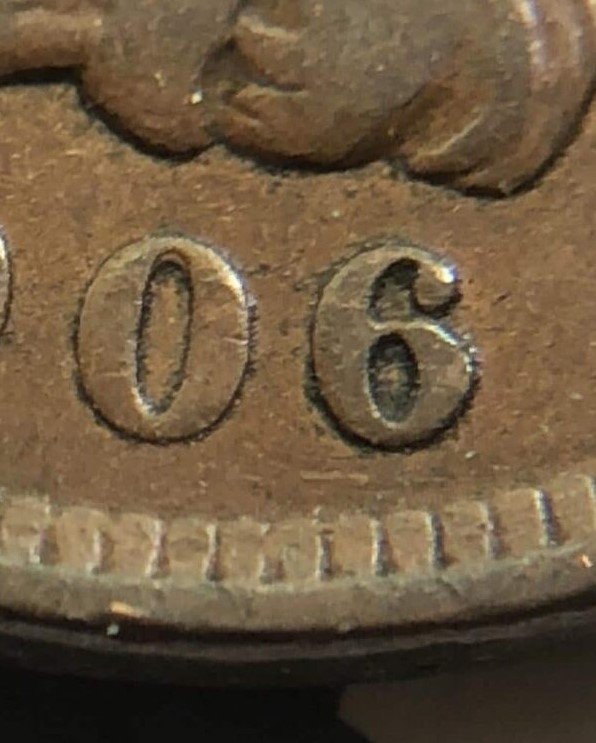
A re-punched date error occurs when a number is mistakenly punched into a working die that already contains a different number. In the case of the 1906 Indian Head penny, mint workers attempted to punch the number 6 over a 5, likely using a 1905 Indian Head penny working die.
As a result, the year 1906 appears with a noticeable fill-in effect on the number 6, due to the previous 5 being partially visible under the new number.
Value of a 1906 Re-Punched Date Indian Head Penny:
- Condition: The value of a re-punched date 1906 Indian Head penny largely depends on the coin’s condition.
- In lower grades, you can expect to see prices in the $150 to $250 range.
- Higher-grade coins with the error can fetch a premium, reaching prices up to $400 for mint state examples.
Collectors highly value these error coins because of the unique double impression and the relatively rare occurrence of such mistakes during the minting process. Therefore, if you come across one of these, it could be worth significantly more than a regular 1906 Indian Head penny!
1906 Double Strike Flip-Over Indian Head Penny Error
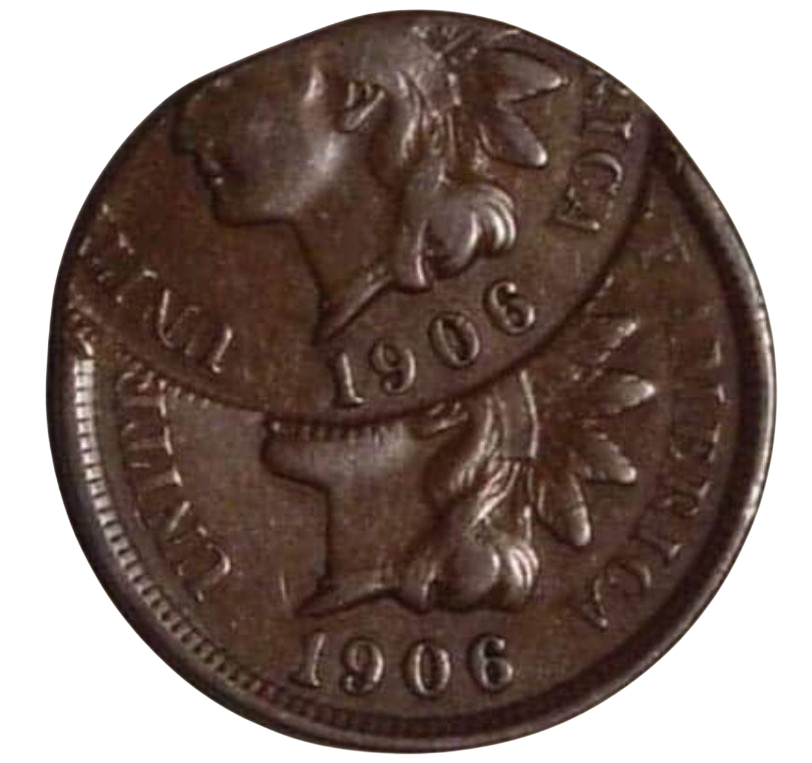
A double-strike flip-over error is a rare and interesting mistake that occurs during the minting process, and it can greatly increase the coin’s value.
How the Error Happens:
- The punching die strikes the planchet normally during the first strike.
- The coin accidentally returns to the coining chamber or fails to exit, landing upside down in the press.
- The die then strikes the coin again, but this time, it presses the reverse design (or the obverse) onto the wrong side of the coin.
Specific to the 1906 Indian Head Penny:
For the 1906 Indian Head penny, the coin flipped over during the minting process with the obverse facing down. This resulted in the reverse design (featuring the denomination “ONE CENT” and the wreath) being pressed over the obverse, where Liberty’s face should be.
Value:
- Double-strike flip-over errors like this are extremely rare, and they can command a significant premium among collectors.
- The value of such a coin largely depends on its condition, but they are typically valued higher than standard 1906 Indian Head pennies.
- Depending on its grade and how distinct the error is, such a coin could easily fetch hundreds or even thousands of dollars at auction.
FAQ: 1906 Indian Head Penny
What is the composition of the 1906 Indian head penny?
The 1906 Indian Head penny is made up of 95% copper and 5% zinc. While it contains a significant amount of copper, it is not made of pure copper. Smelting these coins to extract copper would not yield a premium, as the value of the copper is not high enough to outweigh the coin’s historical and collectible worth.
How many 1906 Indian Head pennies were made?
In 1906, the Philadelphia Mint produced approximately 96,020,530 regular strike Indian Head pennies and 1,725 proof coins, bringing the total to 96,022,255 pennies. This is a high mintage, making these coins relatively common in various grades.
How can you tell if an Indian Head penny is real?
To determine if an Indian Head penny is genuine, look for the following:
- Shape of the numbers and letters: Fake coins often have distorted or irregular characters.
- Quality of the planchet: A real penny will have a solid, even planchet with no hollow core.
- Color: Genuine coins will have a consistent color, with no unnatural sheen or discoloration typical of counterfeit coins.
Where is the mint mark on a 1906 penny?
The 1906 Indian Head penny was struck at the Philadelphia Mint, so it does not have a mint mark. Pennies from Philadelphia typically do not have any mint mark, unlike those minted at other facilities like the San Francisco or Denver Mints.

